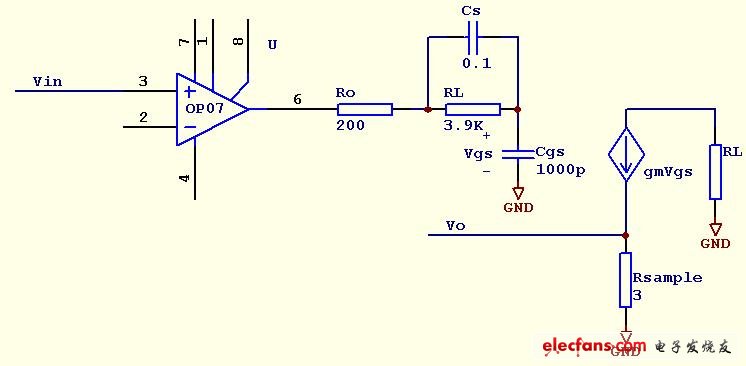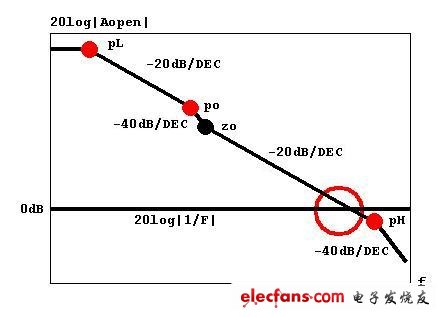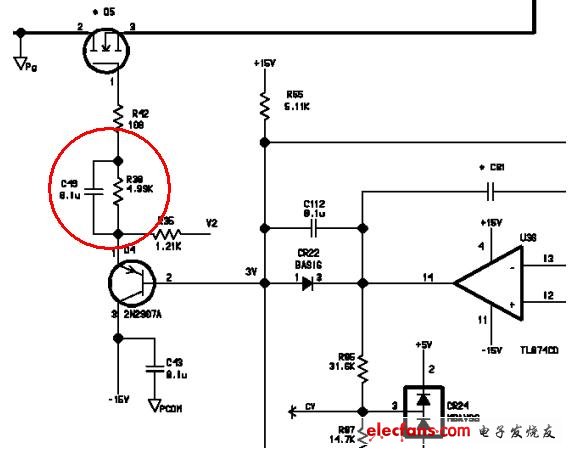For engineers, the current source is an indispensable instrument, and many people want to make a common current source. The application of the open source kit is just a set of PCB, components, programs and other complete sets of products. Participants only need to The kit's things are soldered well, and debugging can be done. How much technical content can be used here, and how much technology can we learn from it? This article is only from the principle of telling, to guide everyone to do the current source that individual can control. This article is mainly to design the content of the simulation part, and basically does not involve the single-chip microcomputer, I hope that friends can learn from the knowledge. Last time I talked about "The current source design small TIps (1): How to choose the right op amp ", and today I will look at other parts of the study.
Acceleration compensation - correct Aopen
Correcting Aopen is the best way to compensate. Simple Aopen compensation will have the effect of 1/F compensation, but it is not a solution.
If the oscillation is caused by the po being above the 0 dB line, the first way to think of is to remove the po.
The basic way to get rid of the pole is to introduce a zero.
The best position to introduce the zero point is Ro, and the parallel capacitor Cs on Ro can introduce a zero point zo to the MOSFET input.
However, Ro is the internal resistance of the op amp and cannot be operated. Therefore, add a resistor Rs after Ro and connect Cs in parallel with Rs.

If Rs "Ro", the role of Ro can be basically ignored.
After adding Rs and Cs, the pole po and zero zo frequencies at the MOSFET input are:
Po = 1/2 pi (Cs + Cgs) Rs, zo = 1/2 piCsRs.
If Cs "Cgs", the original pole po = 1/2 piRoCs moves from the high frequency band to the low frequency band, the frequency is determined by Cs, Cgs and Rs, instead of Cgs and Ro, the newly introduced zero point zo is also in the low frequency band and The po is basically coincident, and the frequency difference between the two is determined by the ratio of Cgs to Cs, and thus is small.
Usually Rs = 2k - 5kOhm, Cs = 0.01 - 0.1uF.

Rs and Cs shift the original pole po to the low frequency band and remove it by zo. Like the chopper op amp, the 1/f noise is quantized to the high frequency band by sampling and filtered. A lot of non-stick methods are all the same.
By transient analysis, the voltage across Cs is not mutated, so the change in the output voltage of the op amp will quickly react to the gate, ie Cs causes the current phase that charges Cgs to lead pi/2. Therefore, Cs acts as an accelerating capacitor, and its compensation is called acceleration compensation or lead compensation.
In many similar circuits, a small resistor is connected in series after Rs//Cs, about 100 Ohm, and then the zero point and the pole position are adjusted slightly. There is no need to add it here, and the neglected Ro is suitable.
For an example, the Agilent 36xx series of MOSFET input stage processing, because PNP internal resistance is very small, at least much lower than the op amp, so there is a R42 = 100 Ohm behind.

Before that, if you see C49 and R39, I am afraid that many friends will have a hard time understanding the role, but this is exactly the level of analog circuit design. Some people lament the complexity of the 36xx series of circuits, but the insider looks at the doorway. In fact, the real place to eat Kung Fu is just a few cheap 0805 resistors and capacitors, not expensive components such as LM399 and AD712 that can be seen at a glance.
Several similar components will appear in the next two sections for a total cost of $0.20.
This increase in cost:
3.9k Ohm resistance 1 unit price of 0.01 yuan, a total of 0.01 yuan
0.1uF/50V capacitor 1 unit price 0.03 yuan, total 0.03 yuan
Total 0.04 yuan
Total cost: 9.46 yuan
The dual-lens Dash Cam means that the dash cam has 2 cameras.
The common dual-recording driving recorder has one camera to record the driver's front view,
and the other camera to record the external conditions behind the vehicle, including the outside road conditions. Vehicles, etc.,
can deal with situations such as rear-end collisions.
The front and rear two-way dash cam can record in all directions.dash cam front and rear,Wide angle dash cam,best dual lens dash cam,front and rear dash cam
Hangzhou Hikauto Technology Co.,Ltd , https://www.hikmotorstore.com